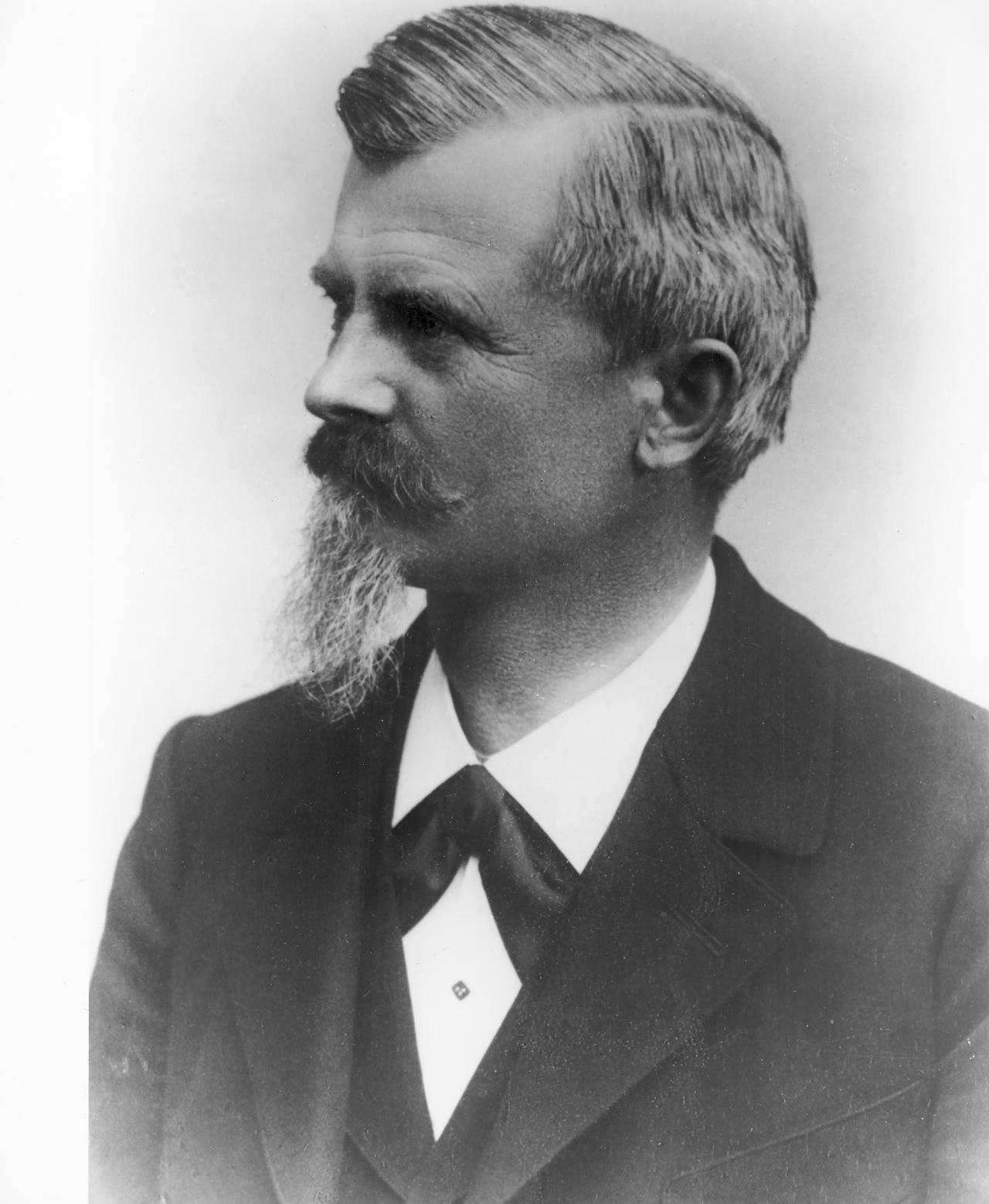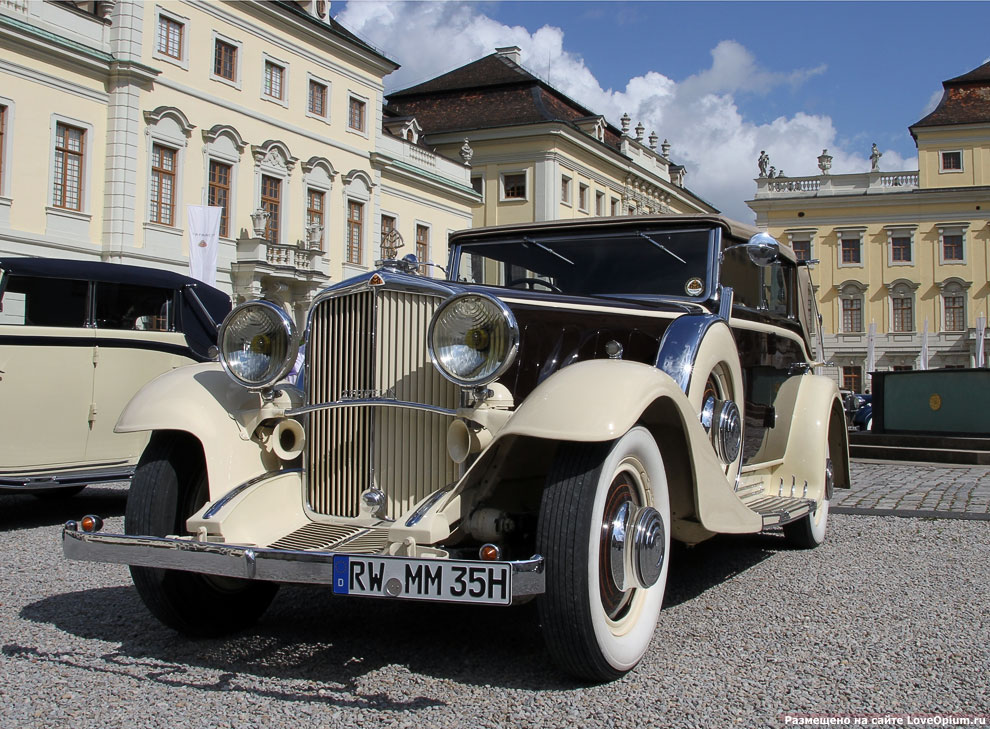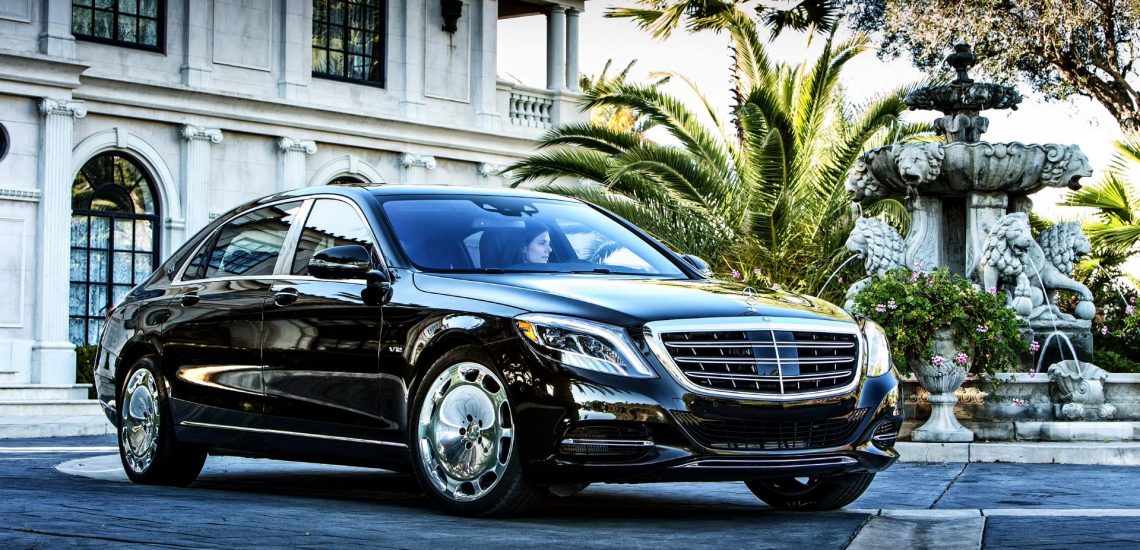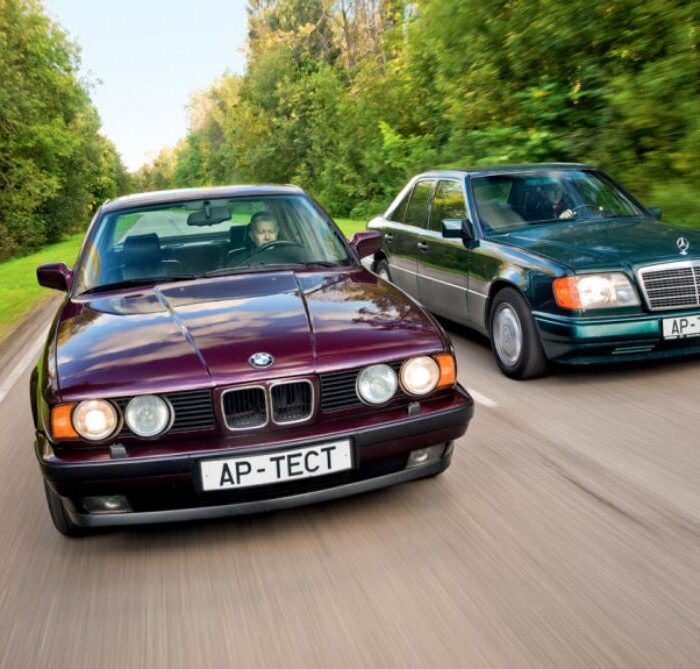Autoluxury, style, reliability, comfort, individuality and monumentality – all these epithets rightly belong to the Maybach collection cars. Yes, in 2012, the production of Maybach models was stopped. What became the reason, also with what it all began, and what motorists left with as a result are described in this article. Let’s try to figure out how it happened that the amazingly exclusive and expensive premium cars, to which Maybach was rightly referred, are no longer produced, and the legendary brand’s history ended.
The Maybach dynasty
The key figure in the appearance of the German automaker Maybach was its founder Wilhelm Maybach, the father of Karl, who continued his parent’s activity.
Wilhelm was born in the family of a carpenter as early as 1846. The place of his birth was the town of Heilbronn. When his father died, Willy was only ten years old. He was taken by Pastor Werner, who organized a kind of Brotherhood House. The latter was associated with a machine-building factory in Reutlingen, so at the age of 15, Wilhelm went there. Theoretical studies of drawing and natural sciences alternated with practical lessons in the design bureau of the factory in Reutlingen, as well as in the workshops. After school, Wilhelm continued his education at the town’s non-classical secondary school, began to study English and theoretical mechanics (by Weissbach’s manual). Wilhelm didn’t lack purposefulness in learning of sciences. His abilities and high workability were noticed by the technical director of the Reutlingen factory, and as a result, the latter, having moved to Karlsruhe, remembered a talented young man and invited him to work in his company, which built internal combustion engines (ICE). This technical director of now the company Deutz was Gottlieb Daimler. Together with Wilhelm Maybach, he got involved with the creation of small, compact and lightweight, in comparison with stationary ones, ICE for transport.

One of the firm Deutz owners, Langen, wasn’t against this idea, but the second, Otto, did not accept it categorically. As a result, G. Daimler moved from Karlsruhe to Bad Cannstatt and opened his own business. It was 1882, and 36-year-old Wilhelm had already decided to go with Gottlieb to become his companion. An agreement was concluded, in which Maybach took responsibility for technical design, and if it came to commercial development, he would receive a solid (premium) amount of monetary compensation.
A year later, Maybach created his own stationary ICE. The construction involved the engine, functioning on a coal gas. Next a sample with a working volume of 1.4 liters and a capacity of 1.6 horsepower appeared.
The next step was the creation of a new ignition system by means of an incandescent tube, which ensured sustainable, stable operation of the engine even at a low speed. Later, a single-cylinder air-cooled engine appeared, reaching 0.25 horsepower at 600 rpm. That is, Maybach constantly strived to perfection, modernization, renewal of already created thing, received more and more patents for inventions, simplified constructions and even desighned them aesthetically. As a result of his efforts and talented hands, an vaporizing carburetor, which allowed to abandon the coal gas and start using liquid fuel, appeared.
In the autumn of 1885, with the participation of W. Maybach’s Karl and Daimler’s son Paul, a revolutionary technological event took place – there were tests of the engine, created by Wilhelm, in the moving of a motor bike (predecessor of a motorcycle). There were two speed modes – 6 and 12 km/h, as well as a constant speed of the engine. Only then there were the tests of the engine on a four-wheeled car, a motor boat, participation in the Paris World Exhibition in 1889 with the first-ever V-shaped two-cylinder engine with the included angle of 17°. Such an engine at 900 rpm developed a capacity of 1.6 horsepower, wheels were set in motion by a conventional gear instead of the previous belt one. This was already a commercial success with the sale of a patent. Gottlieb Daimler created for Maybach a separate workshop and sought to support his talented companion in every possible way. After all, the shareholders demanded results.

In 1894, Maybach received a patent for the design of hydraulic brakes, and a year later its two-cylinder straight engine Phoenix appeared. Originally it reached 2.5 hp at 750 rpm, but the design was gradually improved, and in 1896 its capacity reached 5 “horses”. A new radiator of the original construction allowed to improve the engine’s performance, and in 1899 four-cylinder Phoenix, with working volume of 5900 cm3 and capacity of 23 hp, was already built. The engine was installed in a racing car, created by the Ambassador of the Austro-Hungarian Empire in Nice, Emil Jellinek, and he won the Nice-La Turbie mountain race on this car on March 21, 1899. Jellinek acted under the Mercedes pseudonym. It was his daughter’s name, which soon became a trademark of the Daimler factory.
However, in 1900, Gottlieb Daimler died, and Maybach left in the position of a supplicant, compelled to work to increase the salary. His engineering talent held the whole company, but its leadership didn’t appreciate this. But it was W. Maybach who in 1904 developed the first six-cylinder car engine with a capacity of 120 horsepower.
His humiliation forced Wilhelm Maybach to leave the firm Daimler and in his 61st year to apply for support to Count F. Zeppelin. The latter was fond of airships. Maybach, together with his son Karl, with the assistance of Zeppelin, in 1909 opened an engine-building company Maybach Motorenbau GmbH on the shore of Lake Baden in Friedrichshafen. The firm was led by Karl Maybach, and his father was a lead consultant and stopped working only at a very advanced age, after the First World War. Only in 1918 Maybach Motorenbau GmbH became independent, and three years later released the first car, placing a bet on its products’ luxury and reliability from the start.
Contemporaries called Maybach “the king of designers.” In 1922, the German Engineers Association noted one of the modern car’s fathers as a “pioneering designer”. That was true. A year before, when the seventy-five-year-old engineer no longer worked, the first car of the famed Maybach brand was built at the factory in Friedrichshafen under the direction of Karl Maybach.
The first model of Maybach cars (the W3) was presented at the Berlin Motor Show in 1921. The car was initially positioned as one for very wealthy buyers who prefer reliability and comfort to external luxury. Therefore, they bet not on expensive finishing materials, but on the highest quality of all units, thorough assembly, driving simplicity and safety. The W3 was equipped with brakes on all four wheels (unlike other modern cars, having only two “braking” wheels) and a unique gearshift system. There were only three of them: the first, low “hill-climbing”, and the reverse; each of them was shifted into by a separate pedal, and there was no clutch pedal at all.

The Maybach 12 was introduced in 1929, equipped with a 12-cylinder engine and an automatic transmission.

Wilhelm Maybach died on December 29, 1929, showing the whole world that designing a car is not the construction of a wagon with a motor, but a complex of all its components.
Maybach – Zeppelin – Maybach
In 1930, the Maybach 12, or the Maybach DS7, was created. By that time, Maybach Motorenbau GmbH became a supplier of engines for the Zeppelins again. That is why the Maybach DS7 received its own name Zeppelin. It was considered the best among contemporaneous luxury cars, and its cost was equal to a thousand average monthly wages of a German worker of that time. This car cost from 39 000 marks. At that time, there were no two identical cars of this model, they were all produced under the order, and their design fully included the individual needs of its customer. In total 183 such cars were made.
The model of 1931, the Maybach DS8 Zeppelin, differed not only more powerful and volumetric engine. The five-speed gearbox of this car had two (!) reverse speeds, and the engine shifted up another gear as soon as the driver stopped pushing the gas pedal.

German auto journalists called this car “representative of the highest automotive society”: in a few years of this model’s production, only two hundred copies were made under the order. The cost of the Maybach DS8 Zeppelin reached 40 thousand marks.
It is noteworthy that the driver of this three-ton limousine was supposed to have the right to drive trucks: according to the valid at that time German laws, cars with a weight of not more than 2.5 tons were considered passenger ones.
The SW line, the most massive in the company’s history, appeared as a consequence of Karl Maybach’s idea to expand the client base. These cars didn’t have such huge engines as the previous ones, and so frightening price (only from 13 thousand marks), but still remained premium cars. First of all, that was due to the travelling comfort: the abbreviation in the model name stands for Schwingachswagen – “a car with swinging axles”.
The SW35, released in 1935, had a six-cylinder engine and a much simpler control system than Zeppelin one. Now customers who bought Maybach cars could waste no time learning to handle complex gears and not put an experienced hired chauffer behind the wheel, and drive themselves without any trouble.

Maybach returned the division of their cars into “for the driver” and “for the passenger” models after half a century or more – in 2002.
The Maybach SW42, the last in the line and the last pre-war Maybach model, became a little longer and got a new engine with increased volume. Accordingly, the top speed of the car also increased. This model was preferred by high-ranking Nazi officials and major German industrialists, among whom were, for example, the Reichsminister of Propaganda Dr. Goebbels and the famous aircraft designer Ernst Heinkel. Such cars cost from 20 thousand marks.

By the way, contrary to popular opinion, Stirlitz-Isaev never drove the Maybach: in the novel, he had the “Horch”, which was replaced by the “Mercedes” in the film adaptation. And the only Soviet film where the Maybach SW42 appears on the screen is the adaptation of Irwin Shaw’s novel “Rich Man, Poor Man”, filmed in 1982.
During the pre-war period, the company produced 1800 cars, which were distinguished by their excellent technological equipment with luxurious exterior and interior. To date, there have been 152 Maybach cars in the world since pre-war times.
Since 1936, almost all German tanks were equipped with Maybach engines. They were installed on one of the most famous tanks of the Second World War – Panzer III, and its “heir” – Panzer IV (the most massive tank of the Wehrmacht), and the infamous “Tigers” and “Panthers”, not to mention the numerous modifications and variations of these models.
In 1941, with the beginning of the war on the Eastern Front, Maybach had to phase out the production of luxury cars and switch completely to the development and production of tank engines. But even after the surrender, car production did not resume: the market needed very different cars.
In 1960, the company was acquired by the concern Daimler-Benz, but it took another 36 years before the Maybach brand returned to the market.
The Maybach 57 was the first model introduced in 2002, after a sixty year break. This variation was positioned as a “driver’s car”, that is, for those luxury car owners who prefer to sit at the wheel themselves.
It’s interesting, that, creating this model, its designers deliberately made the car not too fast: according to the creators’ idea, there is nowhere and no need to hurry to those who own this four-wheeled luxury. The price of this pleasure – from €360 thousand.
The Maybach 62 was presented at the same time with the Maybach 57 and in fact differed a little – unless its length. Due to a more spacious cabin, this car immediately moved into the “car for the passenger” class, that is, it is assumed that the owner never seats on the driver’s seat, and is located on one of the two rear seats with folding backs.
There was such a remarkable moment in the history of this model. On June 26, 2002, this car, enclosed in a glass box, traveled from Southampton to New York across the Atlantic aboard the Queen Elizabeth 2 liner, accompanied by press and production company executives, and, then, from the New York port to Regent Hotel on Wall Street. The cost of this car is from €430 thousand.
The Maybach Landaulet costs already from €900 thousand. A fantastic white cabriolet from Maybach was first presented to the public in November 2007 as a concept car created on the basis of the Maybach 62, and its serial production and sales began two months later.

Taking the 62 as a basis, designers removed from it many elements of the rear part, on which the hard top was held, and replaced it with a fabric top that was retracted in a few seconds by an electrohydraulic drive, and the remaining rear quarter pillars were strengthened with special tubular structures.
The Maybach Guard is the last model of this brand, which appeared on the market in 2011. It is also based on the Maybach 62, but differs from it with strong armor. And the weight of the “armored car” is more than its prototype weight by only 406 kg, so that the car accelerates to a speed of 100 km/h in just 5.7 seconds. The price is about €400 thousand.
The Maybach Exelero is the only sports car in the Maybach line and at the same time it is one of the most expensive cars of our time. It is noteworthy that it was created not to gain a new market segment, but for advertising super-high-speed tires of the German company Fulda. Even the name of the model is inherited from the tires’ name – Carat Exelero.
The first copy was assembled manually and presented to the public on May 1, 2005 at the “Nardo” testing ground in Southern Italy. The car showed a top speed of almost 352 km/h on that day. The first owner of this model was rapper Brian Williams, known as Birdman, to whom the purchase cost $8 million. In general, a similar sports car costs no more than $7.8 million.
Today there are only 50 specialized service centers in the world, in which only professionals work. They will help the owner of Maybach solve all his problems with the car, make quality repairs and servicing. These cars’ manufacturers provided the owner with a guarantee for four years of free service and repair.
Unfortunately, the aspirations of Daimler AG to revive the legendary brand were not justified. The sales of Maybach cars turned out to be very low and did not justify money invested in them. They didn’t manage to compete worthy with Bentley and Rolls-Royce. As a result, in the end of 2011 it was decided to abandon the production of cars under this brand.
The reasons of Maybach closure
First, it is believed that Maybach cars couldn’t sustain the competition and significantly lagged behind their rivals in the class. It’s no secret that all brands updated their models with an enviable regularity, constantly upgrading them, and Maybach continued to produce luxurious but quite conservative cars. As a result, sales of Maybach in 2007-2011 didn’t exceed 150-300 cars. Therefore, the concern Daimler decided to pay more attention to the development of Smart-cars, for which it conducted close negotiations about further cooperation with such brands as Mitsubishi and Chrysler.
Secondly, despite the cost of each car in the range of 300 to 400 thousand euros, manufacturers lost almost the same amount of money on each such car. In total, for the entire production of Maybach cars, more than 1 billion euros were invested in the project.
Thirdly, during the seven-year production of the model, attempts were made repeatedly to update this line or modernize the existing ones. In particular, one of the most promising solutions was the release of a crossover, which was planned to be assembled on the basis of GL-class cars. In addition, the Maybach 52 project – a short-wheeled budget variant, the Maybach 57 cabriolet four-door type – was also offered. By the way, the idea of the latest development became the basis for the creation of the Mercedes Ocean Drive.
Fourthly, Daimler previously negotiated with Aston Martin about the creation of a new Maybach cars generation. This joint project was to replace the obsolete 57/62 models. The presentation of the novelties was to be made at the Frankfurt Motor Show, but, unfortunately, it never took place.
As a result of all the above reasons, the concern’s management decided not to modernize the brand, as it lost a lot of time and it was very expensive to catch up competitors, and it would be more appropriate to simply close the brand. Thus, the produced Maybach cars were transferred to the category of collector’s copies. The history of the Maybach brand, most likely, can be considered to be finished on this.
Ten most famous and legendary Maybach models
| Name | Length | Engine | Top speed |
| Maybach W3 | 5 m | 5,7 l, 70 hp | 110 km/h |
| Maybach 12/Maybach DS7 Zeppelin | 5,5 m | 7 l, 150 hp | 161 km/h |
| Maybach DS8 Zeppelin | 5,5 m | 8 l, 200 hp | 175 km/h |
| Maybach SW35 / Maybach SW38 | 5 m | 3,5 l/3,8 l, 140 hp | 140 km/h |
| Maybach SW42 | 5,1 m | 4,2 l, 140 hp | 160 km/h |
| Maybach 57 | 5,7 m | 5,5 l, 543 hp | 250 km/h |
| Maybach 62 | 6,2 m | 5,5 l, 543 hp | 250 km/h |
| Maybach Landaulet | 6,2 m | 6 l, 612 hp | 250 km/h |
| Maybach Guard | 6,2 m | 6 l, 612 hp | 250 km/h |
| Maybach Exelero | 5,9 m | 5,9 l, 700 hp | 350 km/h |
Our aim was not to characterize and even simply list all the pros and cons of Maybach cars. Nevertheless, we hope that the information presented in this article was interesting for you. The history of Maybach is the story of the sunrise and sunset of one of the world’s most legendary and luxurious car brands!

However, no matter what car you own, prestigious or not, you can drive it only when you have a driving license. Ideally, if it is an international one. And it is quite easy to process it – right on our website.

Published October 08, 2018 • 14m to read






